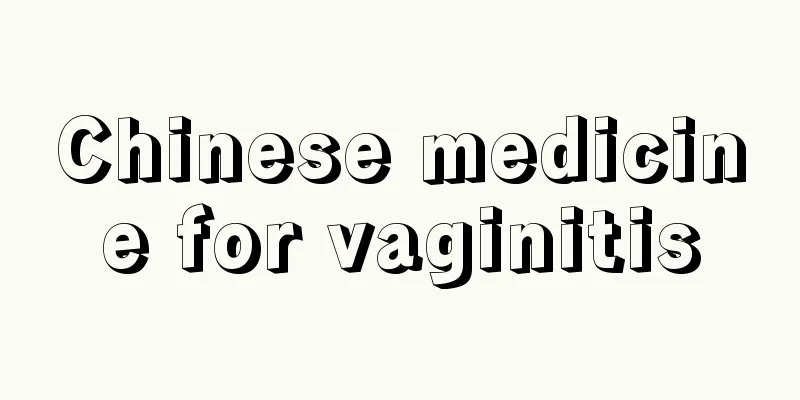What is the best way to treat postpartum mastitis?

|
What women fear most is the occurrence of inflammation in the body. If they had inflammation before having a baby, they could go to the hospital for treatment. However, after having a baby, mastitis is a female inflammatory disease that expectant mothers are more afraid of, because it not only directly affects women's physical health, but also affects feeding the baby. So what is the best way to treat postpartum mastitis? It is best to detect and treat mastitis early. 1. Pay attention to cleanliness: If it can be discovered in time in the early stage and correct treatment can be given in time, the patient's breastfeeding should be suspended, the nipple and areola should be cleaned, and milk should be discharged (using a breast pump or sucking). Those who need incision and drainage should stop breastfeeding. 2. Hot compress: This is one of the treatments for mastitis. Apply local hot compress, or wash 60 grams each of fresh dandelion and honeysuckle leaves, add a little vinegar or wine, and mash them for external application. Use wide bras or a wide belt to support your breasts. 3. Traditional Chinese medicine treatment: It is also an effective method for treating mastitis and has the effect of clearing away heat and detoxifying. The treatment of early mastitis is mainly manifested in the initial stage as milk stasis and internal heat and toxicity. The treatment principles are detoxification, clearing heat, promoting lactation and reducing swelling. Oral medication: You can take Trichosanthes and Burdock Decoction (Trichosanthes, Burdock Fructus, Radix Trichosanthis, Baicalensis Scutellariae, Tangerine Peel, Gardenia Jasmine, Flos Lonicerae, Bupleurum, Forsythia, Pangolin, Citrus aurantium, Citrus aurantium leaves and Rhizoma Chuanxiong). For swelling and pain, add frankincense, myrrh, and red spoon. 4. When treating mastitis, milk-reducing drugs should be used; at this time, breastfeeding on the affected side needs to be stopped and the milk should be sucked out with a breast pump. Appropriate use of lactation-reducing drugs can be used, such as oral administration of diethylstilbestrol 1 mg once, 3 times a day, or bromocriptine 2.5 mg once, 3 times a day. 5. Antibiotics: The treatment of mastitis can also involve the patient taking systemic antibiotics. To prevent and treat severe infection and sepsis, antibiotics are selected based on bacterial culture and drug sensitivity, and intravenous antibiotics are given when necessary. If mastitis is discovered after delivery, it is not recommended to breastfeed the baby, so expectant mothers must pay attention to their health before and after delivery. As for how to treat postpartum mastitis, it is recommended to go to the hospital for treatment, because mastitis is not a minor disease and it is likely to cause the onset of other diseases over time. |
<<: Why do I have stomach pain after having sex during my period?
>>: Symptoms of mild breast hyperplasia
Recommend
What are the reasons for low progesterone at 40 days of pregnancy?
The health of pregnancy is directly related to th...
Is an acoustic neuroma benign or malignant? Will it affect hearing?
Author: Jia Wang, Chief Physician, Beijing Tianta...
What is the effect of massage during menstruation
You must be careful during your menstrual period....
There is a hard lump when I feel my uterus while lying down
In our daily life, some people feel a lump on the...
How much weight is normal during pregnancy?
After a woman becomes pregnant, she will gain wei...
What to do if you suffer from itching during menstruation?
Women will definitely not have menstruation durin...
What should be the sleeping position of a four-month pregnant woman?
When a woman is pregnant, her physical health is ...
What causes a short cervix?
Female friends all know that a short cervix may a...
Investing Analytics: Twitter activity survey shows that Apple is still more popular than Samsung
Although Samsung's mobile phones have been sh...
Washing is healthier. How should women clean their private parts?
Author: Wang Aihua, deputy chief pharmacist, Beij...
What causes calf pain during pregnancy?
Many women will experience a lot of discomfort du...
Are you afraid of physical examination?
"Exercise more and read more health articles...
Will I get mastitis after weaning?
Many mothers worry that their children will get m...
What are the symptoms of hepatitis B in women
In recent years, the number of patients infected ...
What is the reason for the red spots on the pregnant woman's belly?
A woman's immunity will be particularly low d...









